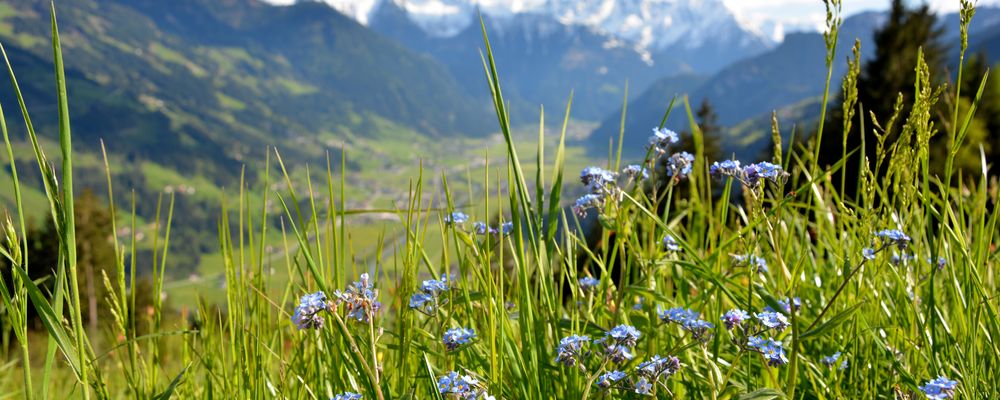Hay milk, hay making, hooray!
Slow food for grazing animals in the meadows and pastures
We are all familiar with it – the aroma of sun-ripened, dried grasses and herbs. This special fragrance tells of fresh alpine meadows in summer. The smell of hay is such a treat. It is said that milk produced by cows dining on regional hay is exceptionally tasty and aromatic. Our taste buds are especially delighted about this and take great pleasure in these high-quality, regional products. But what actually is hay milk? The ZillerSeasons Journal went on a quest for information about the traditions and secrets of organic milk.
One thing is certain: in comparison to its fellow species, hay milk cows enjoy a rich, extensive diet. In summer, the cows graze on lush grasses and plants in the meadows and mountain pastures. In winter, they are fed hay, which is supplemented with mineral-rich whole grains. Silage is not provided to hay milk cows.
Dandelion, thyme, cuckoo flower, great burnet, red clover, yellow oatgrass, sage, and common velvet grass are apparently to the liking of more than just grazing cattle. As blind taste tests have confirmed, the variety of plant species consumed by the cows improves the aroma and taste of the milk. A scientific study by the University of Natural Resources and Life Sciences in Vienna analyzed the fatty acid profile of hay milk in comparison to regular milk. This study revealed that hay milk clearly exhibited a significantly increased quantity of conjugated linoleic acid (CLA) and omega-3 fatty acids.
The return to regionally available resources and raw materials also has a positive effect on the water footprint of milk since no long routes to transport animal feed are necessary. For the cultivation of their pastureland, hay milk farmers rely on a tried and true, well-established tradition. Hay is made in staggered intervals resulting in mosaic-like mowed fields. Instead of cutting hay in an entire field, individual sections remain untouched and serve as a popular retreat for buzzing bees, all kinds of insects, and small animals.
The sun-dried grass on the steep slopes of mountain pastures is mowed with arduous labor, but this exhausting effort has its own reward. With the cultivation of Alpine hay milk regions, the arbitrary spread of forests can be counteracted, and the flora can flourish. In short, hay milk products are a detox for the cows and safe for the environment.
We ensure pure Alpine wellness in the ZillerSeasons in the HochLeger luxury chalet resorts. In the Martinerhof‘s “Reme”, you will find a magnificent pine sauna with its cozy and comfy hay bed relaxation room in which the aroma of fresh mountain hay guarantees deep relaxation. In a culinary respect, great importance is placed on attentiveness in the ZillerSeasons. We acquire organic hay milk from Demeterhof Lengau and the regional alpine dairy, and the chef attentively prepares the products to create treats such as hay milk-honey ice cream and the popular, fluffy Kaiserschmarren pancakes.
Healthy and good: the exceptionally gifted chef of the ZillerSeasons and certified nutritional advisor is very enthusiastic about organic quality and regionality. He has extensive knowledge about the value of nutritious food and lives out his passion for healthy cooking in both his professional as well as private life.

